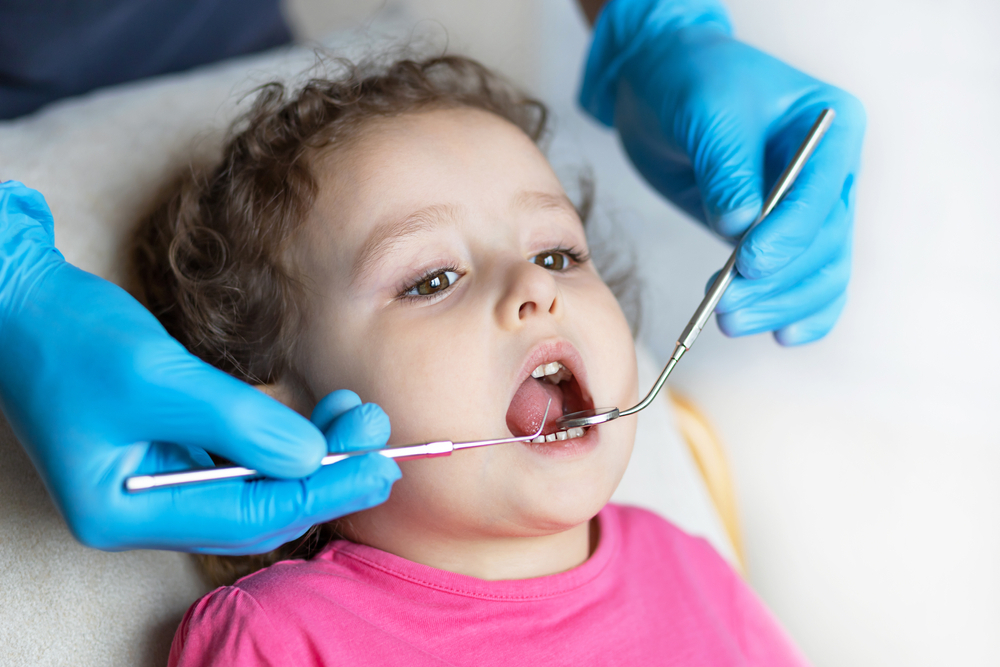Parenthood is a journey full of discoveries, and sometimes those discoveries include unexpected challenges. One such challenge that parents may encounter is lip tie in children. This seemingly harmless condition can have a significant impact on a child’s development, leading to feeding difficulties and potential dental issues. In this blog, we’ll dive into the causes, symptoms, and options for lip and tongue tie treatment near you, shedding light on this often-overlooked aspect of childhood health.
Understanding Lip Tie
Lip tie, medically known as “ankyloglossia,” occurs when the strip of skin beneath the upper lip (the frenulum) is shorter than usual, restricting the movement of the lip. While not all children with lip ties experience problems, some may face difficulties with breastfeeding, bottle feeding, or even proper oral hygiene as they grow older.
Causes of Lip Tie
The exact cause of lip tie is not always clear, but genetic factors may play a role. In some cases, it may be associated with certain conditions, like Ehlers-Danlos syndrome or a family history of tongue or lip ties. Understanding the underlying causes can help parents and caregivers better manage and address this condition in their children and take them to a professional for effective treatment.
Lip tie symptoms
One of the most common signs that your child has a lip or tongue tie is difficulty breastfeeding. Apart from that parents should pay attention to signs such as:
- Difficulty latching during breastfeeding: Infants may struggle to latch onto the breast, causing frustration for both the baby and the parent.
- Poor weight gain: Lip tie can impact a baby’s ability to feed effectively, resulting in slower weight gain.
- Gum recession and dental issues: As children with lip tie grow older, they may face challenges in maintaining proper oral hygiene, potentially leading to gum recession and dental problems.
Treatment Options
Addressing lip tie early on is essential to prevent potential complications. Here are some common treatment options:
- Frenotomy: A simple and relatively painless procedure, frenotomy involves cutting the frenulum to release the tension and allow for greater lip movement. This lip-tie procedure can often be done in a healthcare professional’s office.
- Oral exercises: Physical therapy exercises may be recommended to improve lip mobility and prevent reattachment of the frenulum.
- Lactation support: For infants struggling with breastfeeding, seeking the guidance of a lactation consultant can be immensely helpful in finding alternative feeding positions and techniques.
Post-Treatment Care
After undergoing a frenotomy or other treatment, it is essential for parents to follow post-treatment care guidelines. This may include exercises to promote healing, ensuring proper latch during breastfeeding, and regular follow-up appointments at the tongue tie center in Tampa to monitor the child’s progress.
Lip tie in children is a condition that can have a significant impact on oral health and development. Understanding the causes, symptoms, and treatment options is essential for parents and caregivers to ensure the best outcomes for their children’s oral health.
Are you Concerned about Your Child’s Lip Tie?
Look no further than Tampa Tongue Tie Center! Our experienced team of dentists specializes in diagnosing and treating lip tie in children, ensuring they can smile, speak, and eat with confidence. We offer comprehensive evaluations and personalized lip-tie procedure in Tampa to address your child’s unique needs. From gentle procedures to compassionate aftercare, we’re dedicated to helping your child achieve optimal oral health and development.
Don’t let lip tie hold your child back – schedule a consultation with us today and unlock their brightest smile!
Remember, early intervention is key to addressing lip tie in children and preventing potential complications in the future. With the right knowledge and support, you can ensure your child’s oral health and development thrive.
